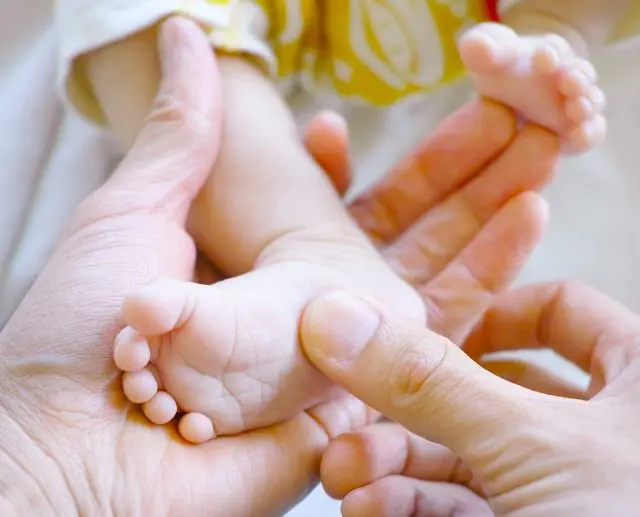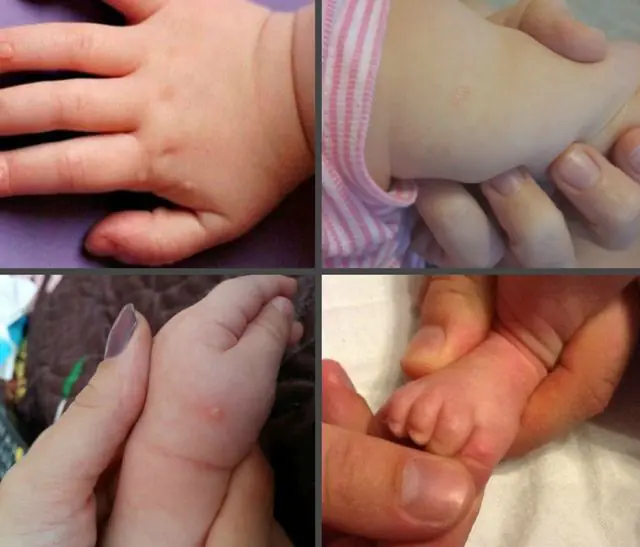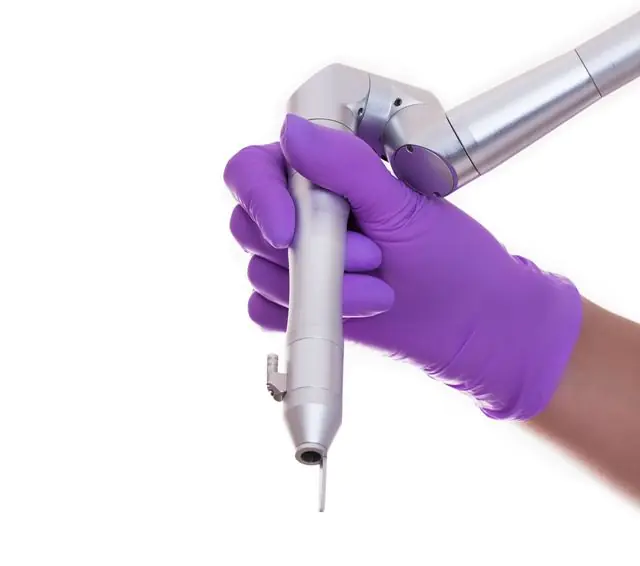
- Reasons for appearance
- What do warts look like in newborns?
- Treatment options
- Removal of tumors
- Prevention
Warts in newborns are benign skin growths caused by mutation of epidermal cells due to infection with the human papillomavirus. There are several types, differing in appearance and location on the baby’s body.
Causes of neoplasms

The main reason for the appearance of warts on the skin of a newborn is infection of the body in general and the skin in particular by the human papillomavirus. It is this virus that causes mutation and proliferation of epidermal cells, which leads to the formation of skin growths.
According to medical classification, a newborn is a child from 1 to 28 days of life. In such a short period, he has less chance and ways of contracting HPV than even a one-year-old child, so warts in newborns are uncommon. But since this is still possible, let’s consider where the papilloma virus can end up in a baby’s body and which reasons most often lead to the formation of warts.
Methods of infection with the human papillomavirus, leading to the formation of epidermal growths in newborns:
- Intrauterine. Suggests infection of the fetus during pregnancy. In this case, the formation of warts in newborns occurs in the womb.
- Generic. It consists of infection of the child by the mother during the passage of the birth canal. If a woman has the human papillomavirus, but it is dormant due to her strong immune system, the baby is unlikely to become infected during childbirth. However, as a rule, pregnancy depletes the female body, relapsing chronic ailments and creating favorable conditions for the development of previously “dormant” pathogens. This leads to the appearance of warts on the body of the newborn. A species that is especially dangerous for a child is anogenital warts - genital warts located in the mother’s vagina, on the labia and in the anus, i.e. in those areas of the epidermis and mucous membranes that the child will directly come into contact with during labor.
- Domestic. Suggests HPV infection at home. This is possible during lactation if the mother has tumors on the breasts and under the breasts. Infection can also occur through close contact of the skin of a newborn with family members who have warts (hugs, kisses, sleeping together with dad, grandmother, older brothers and sisters). They often catch the virus, and hence warts appear in newborns, when they share household items with those who are infected - towels, bed linen, dishes.
- Social. Based on the immersion of the child in a social environment. For example, at a doctor's appointment. As a rule, the first visit to the pediatrician occurs when they reach one month of age, and before that, doctors examine babies at home. But for acute indications, consultation or even hospitalization in a hospital setting is possible. And then infection can occur due to non-compliance with sanitary standards by staff or parents (using reusable untreated instruments, swaddling a child on tables without laying disposable diapers, etc.). Also, modern parents often practice training with newborns in swimming pools. This is especially popular among those who give birth in water. It is extremely difficult to control the quality of water and the way to wash the bathtub (pool) in such cases, so such activities are quite risky not only from the point of view of the likelihood of contracting HPV, which causes warts in newborns, but also many other diseases.
The skin of a newborn baby is so thin and delicate that it is very easily damaged. And even a small scratch is enough for the human papillomavirus to penetrate the body and begin to multiply. By introducing itself into the cellular structure, it changes the DNA of epidermal cells, which leads to the formation of warts. Let us further consider what they look like, what types they are and where they are most often located on the body of a newborn.
- Read also: why papillomas appear in newborns
What do warts look like on newborns?

Photos of warts in newborns
Warts in newborns can be congenital or acquired. Congenital are those neoplasms with which the baby was born, acquired - those that arose in the first 4 weeks of life.
Types of warts in newborns:
- Condylomas acuminata. They are growths of a pointed shape, pink in color, similar to petals. In adults they most often grow in groups, and in newborns they are represented by single inclusions. Soft to the touch, no more than 5 mm in length. They are extremely dangerous because they can be undermined at the base by physical impact.
- Filiform papillomas. These are small soft growths-threads, attached to the skin by the stalk. Their color is pink, mostly slightly lighter than the skin on which they are located. They are easily detached from the skin, causing severe pain and quite heavy bleeding.
- Flat warts. Neoplasms, the distinctive feature of which is growth not upward or deep into the epidermis, but growth to the sides. Most often they have a white or yellowish tint, oval or round shape. These warts in newborns rise upward by no more than 1 mm and spread a couple of millimeters in breadth.
- Vulgar warts. The most common type of childhood warts. But they are rare in newborns. They rise several millimeters above the epidermis, have a pinkish tint and form a small round compaction. They are especially unpleasant for babies because they cause itching when they form.
But this type of wart, like the thorn, is not registered in newborns. These neoplasms are not congenital, and their formation takes more time. Therefore, even if infection occurs in the first four weeks of life, a plantar wart will not have time to form during this period. It rarely occurs in infants - children aged from 4 weeks to 1 year. But in children of preschool and school age, this epidermal growth is common.
The locations of warts in newborns and older children differ.
Where do warts occur in newborns?
- On the face. Epidermal growths can be localized on any part of the face. The forehead, nose, and cheeks are most often affected by flat warts. Genital warts may appear on the eyelids and lips.
- On the limbs. Warts on the hands of newborns are common. As a rule, these are vulgar or flat warts. They are rare, but still occur on the legs of babies.
- On the body. Thread-like papillomas are most often diagnosed here. The place of their localization is the chest and neck of the child. Genital warts form in the anogenital area.
Methods for treating skin growths

For a newborn child, all treatment methods used in the treatment of warts not only in adults, but even in children are inaccessible. This is due to the ban on the use of both medicinal drugs used internally and externally in newborns. Therefore, specific treatment methods come into force here. Their main task is to boost the newborn’s immunity to activate internal forces to fight the human papillomavirus.
How to deal with warts in newborns:
- Complete nutrition. The World Health Organization recommends exclusive breastfeeding for newborns. Therefore, in order for the child to receive a sufficient amount of nutrients and nutrients not only for proper development, but also to fight the virus, the mother’s nutrition must be complete. If she understands that she cannot provide this, the use of vitamin complexes combined with lactation is mandatory. If, for medical reasons, the baby is bottle-fed, a precise selection of formula for a specific baby is necessary, taking into account all his physiological characteristics and needs. Particular attention is paid to water. A healthy child does not need additional “supplementary feeding”, because... Breast milk is almost 90% water. If there are medical indications, you need to use only water that is specially suitable for this purpose, preferably that which is sold in specialized pharmacies or in children's kitchens.
- Healthy sleep. A baby under 4 weeks of age should sleep 17-18 hours a day. At the same time, continuously - at least 1.5-2 hours. If the child sleeps less or wakes up more often, the problem may be due to improper (often insufficient) nutrition or neurological manifestations. Be sure to show your baby to the pediatrician, since sleep is one of the main components not only of the treatment of warts in newborns, but also of full development.
- Fresh air. Saturation of the body is very important for the formation of strong immunity. If the weather permits, you can walk with your baby from the first days of life. When dressing your child, remember that overheating is no less, and sometimes even more dangerous for children than hypothermia. If it is not possible to go on foot, but there is an equipped loggia or balcony without drafts, this is a completely healthy alternative.
- Hygiene. In babies, the thermoregulation system is at the initial stage of formation. Therefore, children often sweat a lot. This has an extremely negative effect on the epidermis and is a provoking factor for the formation of warts in newborns.
Removal of tumors

Considering the age of the baby, doctors also have fewer ways to remove warts in a newborn than even when treating a one-year-old child. In this case, the decision to remove the wart is made only as a last resort. As a rule, doctors recommend that parents wait until the body copes with the virus on its own and the neoplasm separates itself, or until the child grows up and surgical intervention is not as dangerous as for a very young child.
Extreme cases include those that can cause complications in the functioning of organs or affect the child’s quality of life. For example, we are talking about warts located in the anus and making defecation difficult, localized on the nose and thereby making breathing difficult, or interfering with the correct formation of visual function due to their location on the eyelid.
Methods for removing warts in newborns:
- Surgery. It involves hospitalization of the child in a hospital and classical surgical excision of the tumor. This operation is performed under anesthesia, often general. The surgical method is known for the fact that, along with the mutated tissues, some of the healthy ones are captured, so it is more traumatic and requires a subsequent stay in the hospital.
- Laser therapy. A less traumatic way to remove warts in a newborn. It is also done under general anesthesia. Sometimes under general, but more often under local. It involves excision of the wart with a laser. Does not require hospitalization, but there may be a need for postoperative treatment of the excision site in a medical office.
Prevention of warts in a newborn

First of all, you need to understand that warts in a newborn are not such a harmless thing as someone might think. The danger of skin growths lies, first of all, in the possibility of their degeneration from benign to malignant, as well as the risk of damage with the addition of infection. In addition, the presence of papillomavirus in the body and its progression on the epidermis can cause the formation of growths on internal organs, which can lead to incorrect functioning of body systems, a deterioration in the quality of life, and, in the long term, death. Therefore, the issue of preventing the formation of warts in newborns is very important.
Measures to prevent the appearance of epidermal neoplasms in newborns, which adults should pay attention to:
- Vaccination. Today, the most effective way to protect against HPV is vaccination against the virus. It helps protect against several of the most oncogenic types and significantly reduce the likelihood of illness from other strains. It is necessary to get vaccinated at the planning stage of pregnancy, before its onset.
- Therapy. If you are not a proponent of vaccination, use conservative methods. It is effective to use not only external agents to combat warts, but also, first of all, to influence the very cause of their formation - the papillomavirus. In this light, antiviral and immunomodulatory drugs have proven themselves well, having a direct effect on the pathogen and provoking the body to fight HPV. In this case, not only the expectant mother, but also the father should undergo therapy.
- Wart removal. Despite the fact that with pregnancy the number of ways to combat tumors on the body sharply decreases, this does not mean that they have been completely exhausted. For example, surgical removal of warts using laser or radio wave therapy is permitted. It is especially important for the expectant mother to cope with anogenital growths and warts located on the chest so that the baby does not become infected during the birth canal and during lactation. As a result, warts often form on the face of newborns.
- Strengthening the immune system of pregnant women. This will prevent the virus dormant in the body from becoming active and the baby will be born healthy, thereby repelling HPV. The main components of good health for pregnant women: good nutrition and healthy sleep, walks in the fresh air, moderate physical activity, lack of stress and maintaining a good mood.
- Compliance with hygiene standards. No matter how much you are expecting your baby, try to minimize hugs and kisses in the first couple of weeks of life. You are already in close skin contact. Don’t involve loving relatives in this either. Strictly ensure that the baby sleeps on his own bed linen, wipes himself only with his own towels, and that his clothes are thoroughly washed, rinsed and ironed. In hospitals, do not place the child on surfaces not covered with disposable diapers (baby diapers, couches, trestle beds) and insist on using only disposable instruments (spatulas, ear specula), processing stethoscopes, etc.
Warts in newborns are uncommon. But their presence requires control by parents and medical personnel, as well as removal if they cause significant discomfort or a threat to the child’s life. When planning a pregnancy, preventive measures show very good results, so parents are not recommended to neglect them.
- Article on the topic: Papilloma on the chest in a newborn: causes, symptoms, treatment



